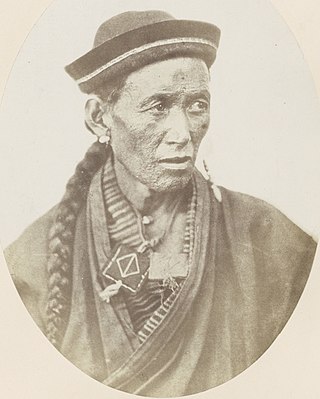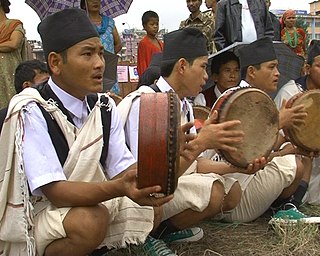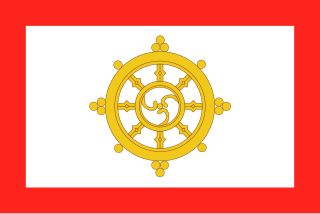
Owing to India's vastness and diversity, Indian music encompasses numerous genres in multiple varieties and forms which include classical music, folk, rock, and pop. It has a history spanning several millennia and developed over several geo-locations spanning the sub-continent. Music in India began as an integral part of socio-religious life.

The music of Afghanistan comprises many varieties of classical music, folk music, and modern popular music. Afghanistan has a rich musical heritage and features a mix of Persian melodies, Indian compositional principles, and sounds from ethnic groups such as the Pashtuns, Tajiks and Hazaras. Instruments used range from Indian tablas to long-necked lutes. Afghanistan's classical music is closely related to Hindustani classical music while sourcing much of its lyrics directly from classical Persian poetry such as Mawlana Balkhi (Rumi) and the Iranian tradition indigenous to central Asia. Lyrics throughout most of Afghanistan are typically in Dari (Persian) and Pashto. The multi-ethnic city of Kabul has long been the regional cultural capital, but outsiders have tended to focus on the city of Herat, which is home to traditions more closely related to Iranian music than in the rest of the country.
Kyrgyz music is nomadic and rural, and is closely related to Turkmen and Kazakh folk forms. Kyrgyz folk music is characterized by the use of long, sustained pitches, with Russian elements also prominent.
Music of Nepal refers to the various musical genres played and listened to in Nepal. With more than fifty ethnic groups in Nepal, the country's music is highly diverse. Genres like Tamang Selo, Chyabrung, Dohori, Adhunik Geet, Bhajan, Filmi music, Ghazal, Classical music, songs and Ratna music are widely played and popular, but many other less common genres are yet to be cataloged. Western musical genres like Rock, Metal, Hip-Hop, Rap, R&B also regularly feature on the Nepalese music charts. Most of the country's musical bands are based in the Kathmandu valley. Musical genres from Tibet and India have greatly influenced Nepalese music.

Traditional Vietnamese music encompasses a large umbrella of Vietnamese music from antiquity to present times, and can also encompass multiple groups, such as those from Vietnam's ethnic minority tribes.

The pungi, bīn or Murli is a musical instrument that originates from the Indian subcontinent. The instrument consists of a reservoir into which air is blown and then channelled into two reed pipes. It is played with no pauses, as the player employs circular breathing. In street performances, the pungi is used for snake charming.

The music of Suriname is known for kaseko music, and for having an Indo-Caribbean tradition.

The Rai are ethnolinguistic groups belonging to the Kirat family and primarily Tibeto-Burman linguistic ethnicity. They mainly reside in the eastern parts of Nepal, the Indian states of Sikkim, West Bengal and in southwestern Bhutan.

Music of Punjab reflects the traditions of the Punjab region of the Indian subcontinent, associated with Punjabi language. Punjab is currently divided into two parts: East Punjab, in India, and West Punjab, the most populous province of Pakistan. The Punjab has diverse styles of music, ranging from folk and Sufi to classical, notably the Patiala gharana. Contemporary Punjabi music has tended to include more modern hip-hop and R&B sounds. While this style of music is obviously most popular in Punjab, it has seen popularity across the subcontinent and areas with large Punjabi diaspora populations, such as Canada, the United Kingdom, and the United States.

The Bhutia are a community of Sikkimese people living in the state of Sikkim in northeastern India, who speak Drenjongke or Sikkimese, a Tibetic language fairly mutually intelligible with standard Tibetan. In 2001, the Bhutia numbered around 60,300. Bhutia here refers to people of Tibetic ancestry.

Indian folk music is diverse because of India's enormous cultural diversity. It is sung in various languages and dialects throughout the length and breadth of this vast nation and exported to different parts of the world owing to migration.

A damphu, or damfoo, is a percussion instrument similar to a large tambourine. This instrument is used by the Tamang people of Nepal to play the melodious Tamang Selo. According to folklore Damphu was invented by Peng Dorje, a Tamang King and named it after Nepal's national bird the Daphne bird. It is also played by the gurung and manger people of nepal.

The culture of Darjeeling, India, is diverse and has a regional distinctness.
In the cuisine of Sikkim, in northeastern India, rice is a staple food, and fermented foods traditionally constitute a significant portion of the cuisine. Indian cuisine is popular, as Sikkim is the only state of India with an ethnic Indian Gorkha majority. Many restaurants in Sikkim serve various types of Nepalese cuisine, such as the Limbu, Newa and Thakali cuisines. Tibetan cuisine has also influenced Sikkimese cuisine. The combination of various cuisines has resulted in one specific cuisine.

Sikkimese are people who inhabit the Indian state of Sikkim. The dominance ethnic diversity of Sikkim is represented by 'Lho-Mon-Tsong-Tsum' that identifies origin of three races since seventeenth century. The term 'Lho' refers to Bhutias (Lhopo) means south who migrated from Southern Tibet, the term 'Mon' refers to Lepchas (Rong) lived in lower Eastern Himalayas and the term 'Tsong' refers to Limbus, another tribe of Sikkim. The pre-theocratic phase of Sikkim was inhabited by the Kiratis, “Sikkim is also known as the home of the Kirati tribesmen from the pre-historic times. Society in Sikkim is characterised by multiple ethnicity and possesses attributes of a plural society. The present population of Sikkim is composed of different races and ethnic groups, viz., the Lepchas, the Bhutias, the Nepalis and the Plainsmen, who came and settled in different phases of history. The historic 8 May agreement between Chogyal, Government of India and political parties of Sikkim defines Sikkimese as Sikkimese of Bhutia-Lepcha origin or Sikkimese of Nepali origin including Tsongs and Schedule castes. The community in Sikkim is inclusive of three sub-cultural sectors: the Kiratis, the Newaris and the Indian Gorkhas.
The indigenous people of Sikkim are the Lepchas; the naturalized ethnic populations of Limbus, Bhutias, Kiratis, & Indian Gorkha of Nepalese descendants who have an enduring presence in shaping the history of modern Sikkim. The indigeneity criteria for including all peoples of Sikkim and Darjeeling hills is a misnomer as it is clearly known that Lepchas are the first people who trace their origin and culture of their ethnogenesis to the historical and somewhat political geography of Sikkim history as is well documented by colonial and immigrant settler history. However many tribes preceded the migration of the colonial powers and can trace their migratory background as well as ancestral heritage and a well formed history of civilization and cultural locus that is not inherently indigenous to Sikkim.

Hira Devi Waiba was an Indian folk singer in the Nepali-language and is hailed as the pioneer of Nepali folk songs.

Tamang Selo is a genre of Nepali folk song sung by the Tamang people of Nepal and is widely popular among the Nepali-speaking community in Nepal, in India, and around the world. It is usually accompanied by the Tamang instruments: Damphu, Madal and Tungna. A Selo could be very catchy and lively or slow and melodious and is usually sung to express love, sorrow and stories of day to day life.

Dance is a performing art form consisting of purposefully selected sequences of human movement. Dance (Nepali: नृत्य/ नाच) in Nepal comprises numerous styles of dances, including folk, ethnic, classical to modern dances. Lakhey is the dance of a demon in the carnival of God. Durbar Square, a historic plaza in Kathmandu, Nepal, facing ancient palaces and adorned by Hindu temples, is always full of eager crowds on the last day of Indra Jatra, the festival celebrating Indra, the Hindu king of heaven. In this divine stage, Lakhe the demon dances among gods and deities relentlessly and carelessly.














